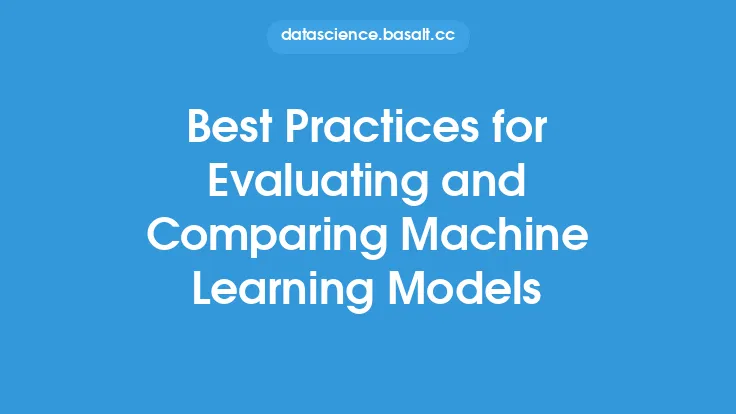When it comes to deploying machine learning models, there are several tools and platforms available that can help streamline the process. Three popular options are TensorFlow Serving, AWS SageMaker, and Azure Machine Learning. Each of these tools has its own strengths and weaknesses, and the choice of which one to use will depend on the specific needs of the project. In this article, we will take a closer look at each of these tools and compare their features and capabilities.
Introduction to TensorFlow Serving
TensorFlow Serving is a system for serving machine learning models in production environments. It is designed to be highly scalable and flexible, and can handle a wide range of model types and sizes. TensorFlow Serving uses a combination of APIs and command-line tools to manage the deployment and serving of models, and provides a number of features such as model versioning, rollbacks, and monitoring. One of the key benefits of TensorFlow Serving is its ability to handle large volumes of traffic and scale to meet the needs of high-traffic applications. It is also highly customizable, and can be integrated with a wide range of other tools and platforms.
Overview of AWS SageMaker
AWS SageMaker is a fully managed service that provides a range of tools and features for building, training, and deploying machine learning models. It includes a number of built-in algorithms and frameworks, as well as support for popular deep learning frameworks such as TensorFlow and PyTorch. AWS SageMaker also provides a range of features for model deployment, including automatic model tuning, model versioning, and rollbacks. One of the key benefits of AWS SageMaker is its ease of use, as it provides a simple and intuitive interface for building and deploying models. It also integrates seamlessly with other AWS services, making it a great choice for developers who are already using the AWS platform.
Introduction to Azure Machine Learning
Azure Machine Learning is a cloud-based platform that provides a range of tools and features for building, training, and deploying machine learning models. It includes a number of built-in algorithms and frameworks, as well as support for popular deep learning frameworks such as TensorFlow and PyTorch. Azure Machine Learning also provides a range of features for model deployment, including automatic model tuning, model versioning, and rollbacks. One of the key benefits of Azure Machine Learning is its ability to integrate with other Azure services, such as Azure Storage and Azure Kubernetes Service. It also provides a number of features for monitoring and logging, making it easier to track the performance of deployed models.
Comparison of Features and Capabilities
When it comes to comparing the features and capabilities of TensorFlow Serving, AWS SageMaker, and Azure Machine Learning, there are a number of key differences to consider. One of the main differences is the level of customization and control provided by each platform. TensorFlow Serving is highly customizable, and provides a high degree of control over the deployment and serving of models. AWS SageMaker and Azure Machine Learning, on the other hand, provide a more streamlined and automated experience, with a focus on ease of use and simplicity. Another key difference is the level of support provided for different model types and frameworks. TensorFlow Serving supports a wide range of model types and frameworks, including TensorFlow, PyTorch, and scikit-learn. AWS SageMaker and Azure Machine Learning also support a range of model types and frameworks, but may not be as flexible or customizable as TensorFlow Serving.
Model Deployment and Management
When it comes to deploying and managing machine learning models, there are a number of key considerations to keep in mind. One of the most important is the need for scalability and flexibility, as models may need to handle large volumes of traffic or be updated frequently. TensorFlow Serving is well-suited to meet these needs, as it provides a highly scalable and flexible platform for deploying and serving models. AWS SageMaker and Azure Machine Learning also provide a range of features for model deployment and management, including automatic model tuning, model versioning, and rollbacks. However, they may not be as customizable or flexible as TensorFlow Serving.
Integration with Other Tools and Platforms
When it comes to integrating machine learning models with other tools and platforms, there are a number of key considerations to keep in mind. One of the most important is the need for seamless integration with other services and platforms, such as data storage and analytics tools. AWS SageMaker and Azure Machine Learning provide a range of features for integrating with other AWS and Azure services, making them a great choice for developers who are already using these platforms. TensorFlow Serving, on the other hand, provides a more flexible and customizable platform for integration, and can be used with a wide range of other tools and platforms.
Conclusion
In conclusion, TensorFlow Serving, AWS SageMaker, and Azure Machine Learning are all powerful tools for deploying and managing machine learning models. Each platform has its own strengths and weaknesses, and the choice of which one to use will depend on the specific needs of the project. By considering the features and capabilities of each platform, as well as the level of customization and control provided, developers can make an informed decision about which tool is best for their needs. Whether you are looking for a highly scalable and flexible platform, a streamlined and automated experience, or a range of features for model deployment and management, there is a tool available to meet your needs.





